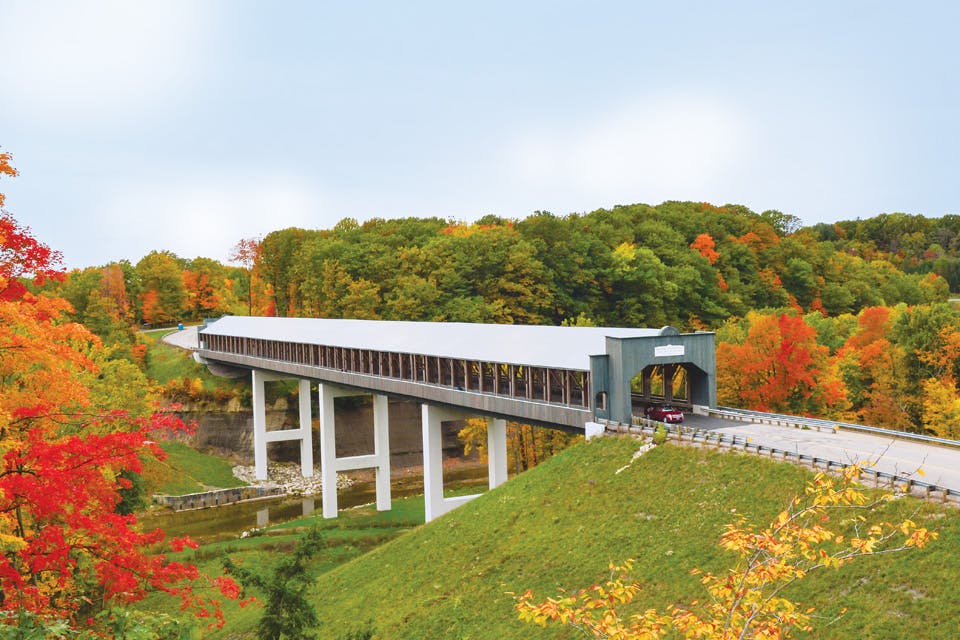Ohio Life
Smolen-Gulf Bridge, Ashtabula
This 613-foot span holds the distinction of being the longest covered bridge in the United States.
Related Articles

Roadside Ohio: Wildlife & Natural Wonders
Immerse yourself in Ohio’s natural beauty, from wildlife encounters with rescued birds at the Ohio Bird Sanctuary or marveling at the stunning rock formations of the Ohio Caverns. READ MORE >>

Roadside Ohio: Unusual Museums and Objects
From neon signs and vintage televisions to troll dolls and cardboard boats, explore these truly one-of-a-kind exhibits. READ MORE >>

Roadside Ohio: Man-Made Marvels
Explore these testaments to creativity and ingenuity that can be found across Ohio, from a re-created Wild West town to the nation’s oldest mini-golf course. READ MORE >>


